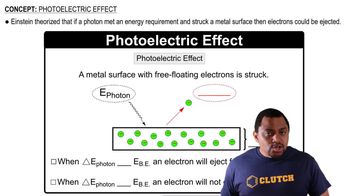State whether each of the following statements is true or false. Justify your answer in each case. (a) Electrolyte solutions conduct electricity because electrons are moving through the solution.
(b) In the 1850s, Michael Faraday prepared ruby-red
colloids of gold nanoparticles in water that are still stable
today. These brightly colored colloids look like solutions.
What experiment(s) could you do to determine whether a
given colored preparation is a solution or colloid?
 Verified step by step guidance
Verified step by step guidance
Verified Solution
Key Concepts
Colloids vs. Solutions

Tyndall Effect

Stability of Colloids

State whether each of the following statements is true or false. Justify your answer in each case. (b) If you add a nonelectrolyte to an aqueous solution that already contains an electrolyte, the electrical conductivity will not change.
(a) Do colloids made only of gases exist? Why or why not?
Choose the best answer: A colloidal dispersion of one liquid
in another is called (a) a gel, (b) an emulsion, (c) a foam,
(d) an aerosol
We have learned in this chapter that many ionic solids dissolve in water as strong electrolytes; that is, as separated ions in solution. Which statement is most correct about this process? (a) Water is a strong acid and therefore is good at dissolving ionic solids. (b) Water is good at solvating ions because the hydrogen and oxygen atoms in water molecules bear partial charges. (c) The hydrogen and oxygen bonds of water are easily broken by ionic solids.
